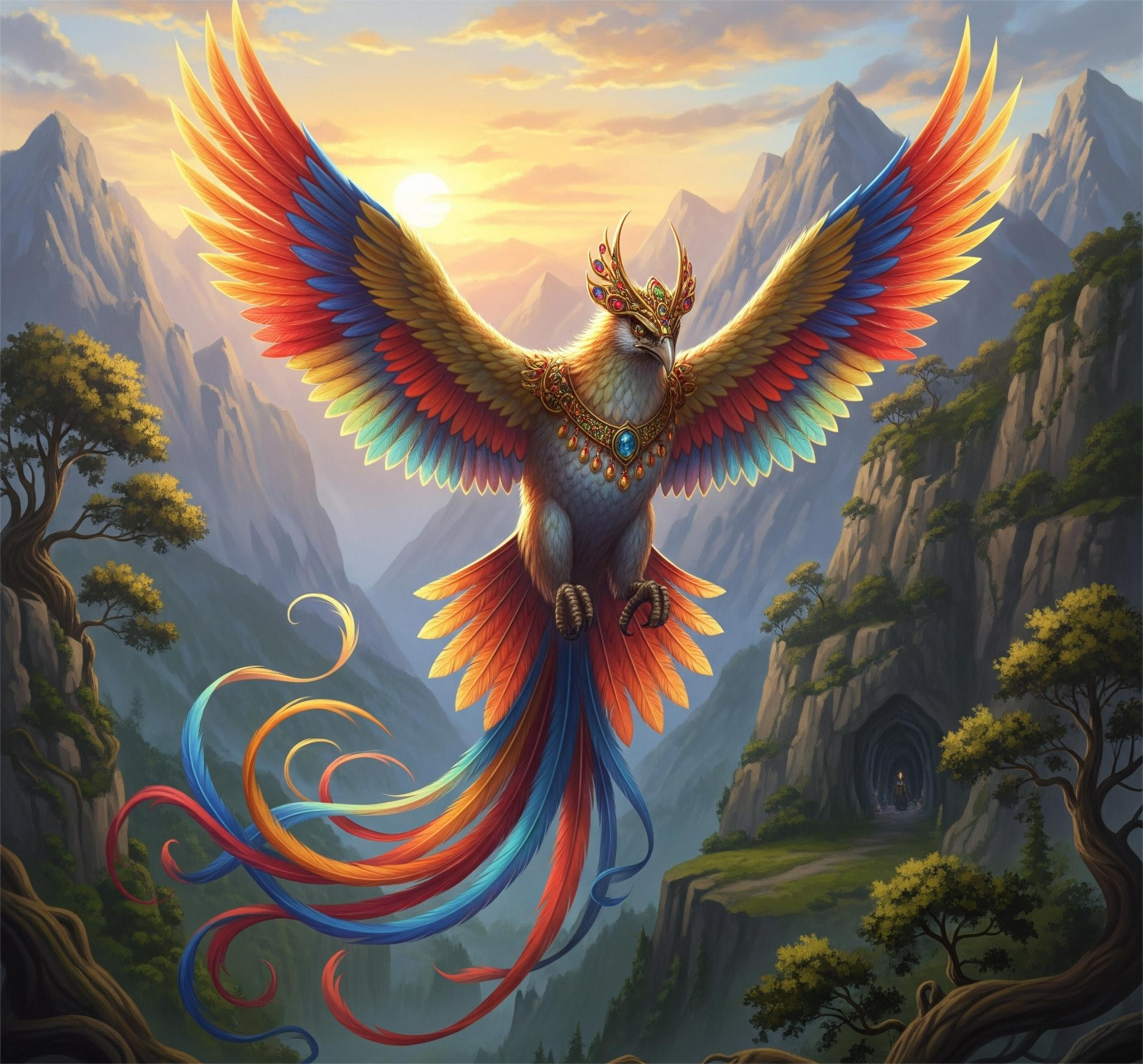Rising from the heart of Persian mythology is the Simurgh—a majestic, phoenix-like creature whose wings stretch across centuries of storytelling. Neither entirely bird nor wholly divine, the Simurgh represents a bridge between the earthly and the celestial. Symbol of wisdom, healing, fertility, and divine protection, the Simurgh is one of the most enduring and mysterious beings in the mythological traditions of Iran and the wider Persianate world.
Let’s soar through the legends and meanings behind this mythical marvel.
What Is the Simurgh?
The Simurgh (also spelled Simorgh or Sēnmurw) is often described as a gigantic bird with the head of a dog or lion, sometimes with the claws of a lion and the tail of a peacock. Said to be immortal, the Simurgh was so ancient it had seen the world destroyed and reborn three times.
Yet despite its intimidating form, the Simurgh is no monster. It is a gentle, wise, and maternal being that offers guidance, healing, and cosmic justice.
Roots in Persian Mythology
The Simurgh's earliest roots can be traced back to Avestan texts, the sacred scriptures of Zoroastrianism. In these, the bird is known as the Saēna, a benevolent creature living atop the Tree of All Seeds, which grows in the cosmic sea Vourukasha. This tree is the source of all plant life, and the Simurgh helps shake its seeds loose to spread healing and fertility throughout the world.
Later, in Islamic-era Persian epics such as the Shahnameh by Ferdowsi (10th century), the Simurgh takes on more narrative form—becoming a literal protector of heroes, especially those of the house of Zal and Rostam.
The Simurgh as Healer and Sage
In myth, the Simurgh is deeply associated with:
Healing: The bird possesses great medical knowledge. In the Shahnameh, it teaches how to treat wounds and even how to perform a Caesarean section.
Wisdom: Because it has lived for thousands of years, the Simurgh holds ancient knowledge of the world, divine justice, and fate.
Purification: Its feathers are said to cleanse corruption and negativity. Carrying a Simurgh feather offered protection.
Its nest, often on a mountaintop or the mythical Tree of Life, symbolized the space between heaven and earth—a spiritual axis of revelation.
Simurgh in the Shahnameh: The Tale of Zal
One of the most iconic Simurgh stories comes from Ferdowsi’s Shahnameh:
Zal, an albino prince, is abandoned by his father and left to die in the mountains. The Simurgh discovers the infant and raises him in her nest.
When Zal matures, the Simurgh returns him to humanity, gifting him three magical feathers. In times of need, Zal burns one, summoning her aid.
Later, when Zal's wife is in life-threatening labor, he calls the Simurgh, who instructs him on how to safely deliver the child—a boy who would become the great hero Rostam.
In this tale, the Simurgh acts as a mother, mentor, and guardian spirit, protecting the righteous and ensuring the continuation of heroic lineage.
Symbolism and Cultural Echoes
The Simurgh transcends myth to become a symbolic figure in Persian culture:
Unity and Oneness: In Sufi mysticism, the Simurgh represents the divine self or collective spiritual truth. In the 12th-century poem The Conference of the Birds by Attar of Nishapur, thirty birds journey in search of the Simurgh, only to realize that they are the Simurgh—a metaphor for self-realization and divine unity.
Cosmic Balance: As a guardian of the Tree of Life, the Simurgh helps maintain the natural order and balance between good and evil.
National Symbol: It appears in Persian art, tilework, literature, and poetry as an emblem of justice, knowledge, and continuity.
The Simurgh Today
Modern Iranians and people across the Persian cultural sphere still celebrate the Simurgh through:
Poetry and literature
Art and textiles, especially in miniature painting and carpet design
National pride, where the Simurgh appears as a symbol of cultural resilience and spiritual identity
In post-revolutionary Iran and among the diaspora, the Simurgh is often invoked as a mythical reminder of hope, healing, and ancient wisdom in times of crisis.






